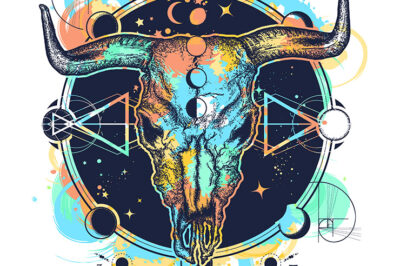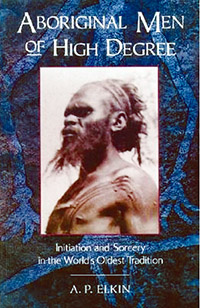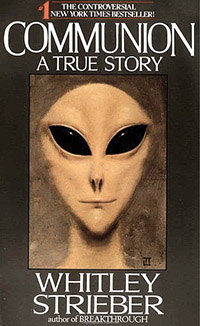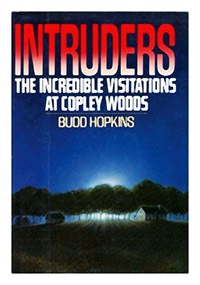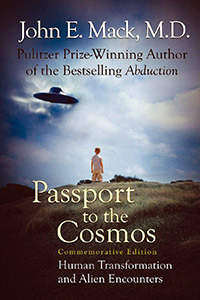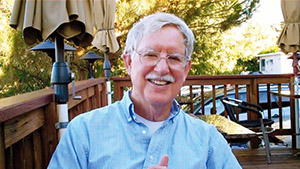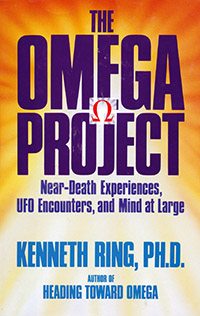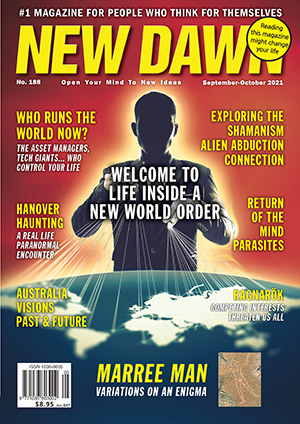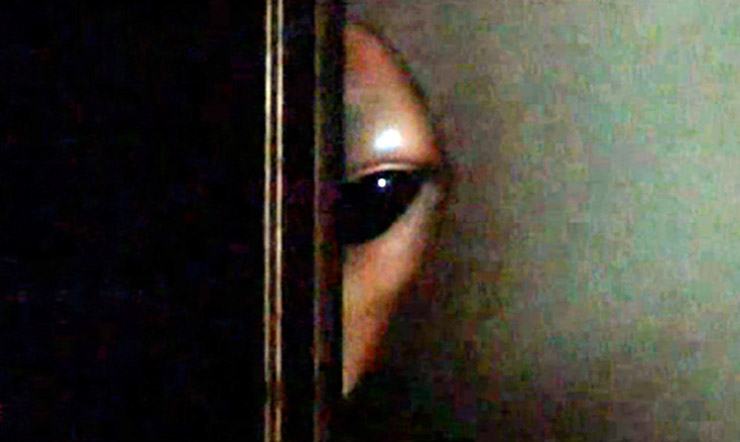From New Dawn 188 (Sept-Oct 2021)
Baldwin Spencer and Frank Gillen, in their book, The Northern Tribes of Central Australia (1904), provided a classic account of an extraordinary tradition. An Aborigine, Kurkutji, was set upon by two spirits, Mundadji and Munkaninji, in a cave:
“Mundadji cut him open, right down the middle line, took out all of his insides and exchanged them for those of himself, which he placed in the body of Kurkutji. At the same time, he put a number of sacred stones in his body. After it was all over, the youngest spirit, Munkaninji, came up and restored him to life, told him that he was now a medicine man and showed him how to extract bones and other forms of evil magic out of them. Then he took him away up into the sky and brought him down to earth close to his own camp, where he heard the natives mourning for him, thinking that he was dead. For a long time, he remained in a more or less dazed condition, but gradually he recovered and the natives knew that he had been made into a medicine man. When he operates the spirit, Munkaninji is supposed to be near at hand watching him, unseen of course by ordinary people.”
This is a striking description of the initiatory experience of an Australian aboriginal shaman. A.P. Elkin aptly referred to these individuals as “aboriginal men of high degree.”
There are numerous accounts of this kind from the past, from recent times, the present, and right around the world. In addition, there are many excellent works covering shamanism, like the classic study by Mircea Eliade, Shamanism: Archaic Techniques of Ecstasy and his analysis of the Australian tradition, Australian Religions; Carmen Blacker’s The Catalpa Bow: A Study of Shamanic Practices in Japan; Michael Harner’s The Way of the Shaman; Joan Halifax’s Shamanic Voices; Holger Kalweit’s Dreamtime & Inner Space: The World of the Shaman; Shamans Through Time edited by Jeremy Narby and Francis Huxley; Shamans of the World edited by Nancy Connor with Bradford Keeney; and The Beauty of the Primitive: Shamanism and the Western Imagination by Andrei Znamenski.
Ritual death and resurrection, abduction by powerful beings, ritual disembowelment, implanting of artefacts, aerial ascents and journeys into strange realms, alien tutelage and enlightenment, personal empowerment, and transformation – these and many other phenomena are recurring elements of the extraordinary shamanic tradition.
Incredibly, these worldwide native aboriginal experiences share an impressive connection with a bizarre complex of human experiences that have attracted a lot of attention since the late 1960s.
Whitley Strieber’s “visitors”
One of the best-known accounts of this contemporary mirror of the shamanic tradition appeared in 1987 in a best-selling book that sold more than four million copies worldwide. The story behind it was made into a film by Australian director Philippe Mora. I am referring to Whitley Strieber’s book Communion. Its sequels, Transformation (1988), Breakthrough (1995), The Secret School (1996), The Communion Letters (with Anne Strieber, 1997), Confirmation (1998), Solving the Communion Enigma (2012), The Supernatural (with Jeffrey Kripal, 2016) and A New World (2020) continued Whitley Strieber’s story of a claimed “elaborate personal encounter with intelligent non-human beings” and his attempts to understand the mystery. Whitley Strieber’s story emerges from the perspective of the alien UFO abduction. Whatever its factual reality or physical basis, Strieber’s account of his experiences is one of the most potent personal expressions of the UFO abduction mystery.
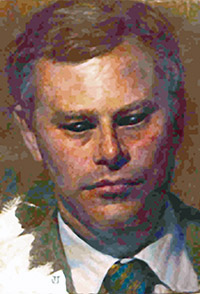
Strieber describes how he was taken from his upstate New York cabin on 26 December 1985 by unknown “visitors.” From the nearby woods, he recollected being taken up into the air and suddenly finding himself in “a messy round room.” Strange beings were there. A needle-like thing was allegedly inserted behind his right ear. A grey and scaly object with a sort of network of wires on the end was briefly inserted into his rectum. An incision was made on his right forefinger. He had no further conscious recollections beyond that point.
The memory of what he thought happened came back to him over the next few days. The impact was shattering. He thought he was losing his mind. He even contemplated suicide. Instead, he was helped by UFO researcher Budd Hopkins who arranged for him to see a psychiatrist, Dr Donald Klein.
Dr Klein’s hypnosis sessions provided further details of the 26 December 1985 episode and earlier experiences. As Strieber searched further into his past, he uncovered not explanations and certainty but instead more mysteries. He concluded: “I had a relationship with them, despite the fact that I could not even be sure they existed.”
By the time the December 1985 experience overwhelmed him, Strieber may have had these sorts of encounters at least a dozen times. He embarked on an intellectual journey through the vast UFO and related literature, trying to grapple with the mystery that had enveloped him.
Strieber also describes how others around him were witnessing the “visitors.” Quite a number of people who stayed at his New York cabin allegedly witnessed the “visitors.” Is this baseless contagion or evidence of the paradoxical reality of the “visitors,” as seen by Whitley Strieber? As a highly successful novelist, Strieber has had to face claims that Communion and its sequels are works of clever fiction. He insists it is all true. Having met him and spoken at length with him on several occasions, I feel it is clear he is trying to convey the ‘impossible’ as best he can.
Whitley Strieber felt that the “visitors” represented “the most powerful of all forces acting on human culture. They may be extraterrestrials managing the evolution of the human mind. Or they may represent the presence of mind on another level of being. Perhaps our fate is eventually to leave the physical world altogether and join them in that strange hyper-reality from which they seem to emerge.”
Further, he wondered “if the shamanic language of symbol and myth would offer a better insight into the visitors’ motives”? In Transformation, Strieber contemplates, “Like the shamanic aspirants of old, I would be forced to confront death.” A friend of Strieber’s, Dora Ruffner, felt “the visitor experience was initiatory in nature – a journey into the underworld.” In an interview for Terror Australis magazine, Strieber suggested “that shamanism is the shattered remnants of mankind’s early attempts to control this (visitor) phenomenon.”
Budd Hopkins & ET Genetic Experiments
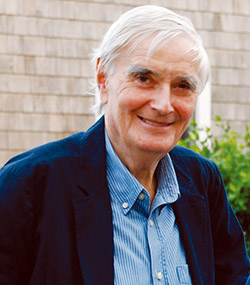
The field of Ufology has developed a range of positions on ‘alien abductions’, but the most popular view appeared to be that of the late researcher Budd Hopkins, author of Intruders, Missing Time, Witnessed, and (with Carol Rainey) Sight Unseen, and his memoir Art, Life and UFOs.
The “alien abductors,” in Hopkin’s view, were extraterrestrial and are involved in some sort of extraordinary genetic experiment. Human beings are first abducted when children. A cell sampling operation occurs. These lead to certain individuals being followed closely. After puberty, ova and sperm cells are taken during follow-up abductions. The goal of this activity is “the merging of human and ‘alien’ genetic material for the production of a hybrid race.” The hybrids are then apparently brought to term in laboratory “nurseries” inside large UFOs. The involuntary contributors are later abducted yet again and are shown the results – tiny hybrid infants or children. This bizarre “baby presentation” apparently involves the abductees being asked to pick and hold their “offspring” in a kind of binding experience!
In the book Phenomenon (1988) edited by Hilary Evans and John Spencer, Hopkins concedes: “I am the first to admit the sheer outrageousness of such ideas, but outrageousness doesn’t mean untruth. I find the evidence, unfortunately, compelling. I have every reason to conclude that these ‘impossible’ breeding experiments are actually taking place… I am convinced that, for good or ill, these genetic procedures are at the heart of the UFO abduction phenomenon.”
Hopkins is credited with bringing abductions into the central focus of UFO study and research in the 1980s. There was furious debate amongst many UFO researchers about the legitimacy of these developments. Not all accepted that the abduction claims were the key to the UFO mystery. Many saw the abduction stories as an inevitable outgrowth of a psychological response to the ostensibly more objective manifestations of mainstream UFO ‘reality’. Others saw such events in a more positive light, with a transformational aspect. Others argued that the richness of the human mind and dynamic interplay with UFO researchers spawned these accounts, not aliens.
However, the UFO abduction mystery was not simply an artefact of a few investigators. It’s seemingly worldwide in its dimensions. English researcher Jenny Randles’ book Abduction (1988) carries details from over 200 ‘abduction’ reports from some 35 countries, as diverse as Zimbabwe, Finland, China, USSR, Tibet and India.
Reports occur in Australia. I have investigated many cases myself. My book Hair of the Alien: DNA and Other Forensic Evidence for Alien Abductions (2005) examined the experiences of Peter Khoury and the hair sample that yielded fascinating results. It led me to develop what I referred to as “the alien DNA paradigm,” focusing on the possibility of evidence for alien genetic “intelligent intervention” in various cultures (particularly indigenous cultures) around the world. It was driven by locations with high strangeness/breakthrough activities with UFOs, light phenomena, alien abductions, by cultures that feature claims of “sky beings,” diverse UFO phenomena, by possible unusual DNA markers within these cultures or present selectively or generically in human DNA, and by locations or regions which bring together each of these factors (UFO “haunted” location, alien mediated culture, DNA aspects).
John Mack & the Psychology of the ET Experience
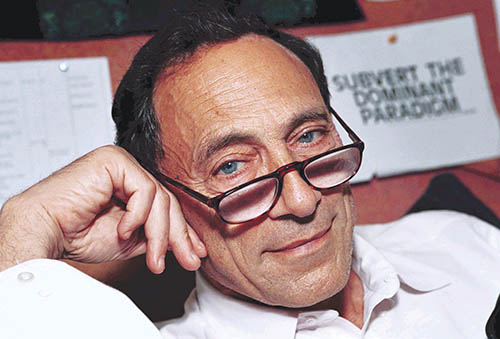
Alien abduction narratives became a central focus for many researchers. The late John Mack was a potent and articulate spokesman for a transformational focus. With his 1994 book Abduction: Human Encounters with Aliens, and more particularly his 1999 book Passport to the Cosmos: Human Transformation and Alien Encounters, he signalled and mapped out his perspectives. In essence, Passport presented a shamanic envisioning of the whole alien abduction mystery. The transformative aspects of the phenomenon held sway for John Mack, and examination of the physical dimensions seemed secondary or even unimportant.
The kind of information I have focused on such as DNA, albeit not without ignoring the shamanic correlations, perhaps conflicted with the numinous dimensions of the hyper-reality John Mack speculated may be at the heart of the abduction phenomenon. It seemed that in alien abductions, Mack saw affirmations of important concerns and perspectives he had held for some time. They sat well with the transpersonal and environmental issues he had championed for some time, certainly long before the alien sirens beckoned him into their seductive embrace.
The Believer: Alien Encounters, Hard Science, and the Passion of John Mack (2021) by Ralph Blumenthal (co-author of the December 2017 New York Times UAP/UFO breakout story), for me, enhanced the contexts of his Australian visits and gives insights into John Mack’s conflicted dance with physical evidence of alien abduction claims. He was more interested in its ultimate meaning, nature and impact. When he was in Australia, I supported his research into indigenous aboriginal abduction and UFO experiences – an area we both had a strong interest, particularly its shamanic dimensions.
John Mack argued in Passport to the Cosmos: “There are problems with an entirely literal physical interpretation. To begin with, despite liberal use of words like genetic, DNA, and mitochondria, there is not solid material evidence of which I am aware to support the notion that any of this, including the creation of the hybrids themselves, is occurring on the material plane to the extent that detectable or measurable changes are happening at the molecular level. At best what we have in the physical domain are small lesions (which skeptics say could be self-inflicted, but I have found no evidence for this) and bodily symptoms that might be manifestations of subtle forces, real energies originating on another plane of reality.”
These statements puzzled me somewhat because during his research visits to Australia and afterwards, John Mack had become well acquainted with Peter Khoury and the fact that the hair sample related to his 1992 experience was being subjected to mitochondrial DNA sequence analysis. Our first report on the work, ‘Strange Evidence’, appeared in the Spring 1999 issue of the International UFO Reporter and information about it was widely reported in the UFO media from June 1999 onwards. Before that, we were circulating the preliminary results of the research. In addition, while the words genetic and DNA might have been liberally used in the abduction research field, I was not aware of similar usage of the term mitochondrial until the appearance of my ‘Strange Evidence’ report.
Mary Rodwell champions the transformational perspective in her books, Awakening: How Extraterrestrial Contact Can Transform Your Life (2002) and The New Human: Awakening to our Cosmic Heritage (2016). The extensive study, ‘Beyond UFOs: The Science of Consciousness and Contact with Non Human Intelligence’, edited by Rey Hernandez, Jon Klimo, and Rudy Schild (2018), gives a framework for this viewpoint.
Some critics argue that sufficient explanations for the UFO abduction mystery are found in the physiological or psychological domain, such as sleep paralysis, temporal lobe sensitivities, fantasy-prone personalities, and a host of other avenues bound by the human condition.
The Imaginal Realm
Another interpretation of UFO abduction accounts also appears to strengthen the shamanic perspective of the abduction narratives. I refer here to the imaginal interpretation. Note that I wrote imaginal, not imaginary. There is a big difference if you believe the proponents of the idea.
Dr Kenneth Ring of the Department of Psychology at the University of Connecticut, and author of the near-death experience studies Life at Death and Heading Toward Omega, described his theory of imaginal UFO abductions in the MUFON UFO Journal of May 1989, and incorporated these ideas into his 1992 book The Omega Project: Near-Death Experiences, UFO Encounters, and Mind at Large.
He included a quote from me: “Aboriginal shamans have a powerful and consistent tradition of ritualistic initiation, the elements of which bear amazing similarities to many modern-day UFO abductions and contact accounts.” This had come from a research paper I presented way back in 1977 at an Australian UFO conference. I stated that while, at least then, we appeared to lack contemporary cases which demonstratively show, among other things, the elements of abduction, “contact,” and “time-lapse,” Australia, unbeknown to most researchers, enjoyed a rich indigenous tradition of similar accounts – the tribal initiation accounts of aboriginal medicine men – men of “high degree” as A.P. Elkin aptly puts it.
Kenneth Ring’s ideas struck a responsive chord with speculations I had been considering for more than a decade. By 1990 I had examined the works of the great French Islamic scholar Henry Corbin. In a paper first published in 1964 entitled ‘Mundus Imaginalis or the Imaginary and the Imaginal’, Corbin coined the term “imaginal” to account for the Islamic mystical notion of a hidden realm (“a third kingdom” – the Alam Al-mithal as contained in the Sufism of the Islamic mystic Ibn’ Arabi).
According to proponents, the “imaginal realm” could be accessed in certain altered states of consciousness – for example, via “mythical consciousness” (to use James Hillman’s archetypal psychology term) or “shamanic states of consciousness” (to use western shamanic exponent Dr Michael Harner’s terminology).
Kenneth Ring made the critical point that the imaginal realm was as real as everyday reality but usually separate and invisible to us. It apparently had form, dimension, and, he contends, “most important for us, persons.”
In this Islamic “imaginal” realm of Alam Al-mithal, there were claimed to be quite a number of strange denizens, some having characteristics that bear an extraordinary likeness to the entities that dominate UFO abduction stories. One species, the Jinn, was described in 1983 by veteran English UFO writer Gordon Creighton in a fascinating piece in the Flying Saucer Review, entitled ‘A brief account of the true nature of the “UFO entities”.’
Ring highlights shamanism as one of the most potent expressions of the imaginal realm. He states: “The shaman is the prototypic ‘otherworld traveller’, a man (or woman) who is at home in both worlds, recognises the reality of each, and can easily journey between them.”
Richard Noll succinctly states the critical issue in his essay, ‘The Presence of Spirits in Magic and Madness’ (in Shirley Nicholson’s compilation, Shamanism): “Humankind has traditionally consulted extra-mundane entities for expanded knowledge and empowerment, for they are traditionally considered ‘sources of wisdom’ that are transpersonal and able to convey crucial information beyond the normal constraints of space and time …The practitioner usually initiates dialogues with spiritual entities by first inducing an altered state of consciousness, which allows these ‘invisible guests’ to be seen and heard. However, in some instances it is they who knock first on the doors of imaginal perception. Called or not called, they offer symbolic potential for transformation, whether for oneself, for others, or for desired changes in the physical environment…”
These beings are not imaginary in the sense of being not real, pure fantasy, or artificially made up. They are imaginal, existing in a realm of experience in which they inhabit a reality of their own, a mundus imaginalis or “imaginal world,” as Henry Corbin deems it, which is co-existent with the mundane experiential world of our ordinary state of waking consciousness. Imaginal beings are part of our experienced reality and have probably been so since the birth of human consciousness.
The concept of an imaginal realm sits very well with the paradoxical reality of the UFO abduction mystery, however, it is just as unprovable as the extraterrestrial hypothesis. Some proponents of the imaginal view argue that confirmation comes through experience. It is difficult to see how the idea can be substantiated.
Dr Ring’s suggestion that his theory could be easily disproved by the arrival and open contact of extraterrestrial abductors, falls short with the lack of explicit mainstream confirmation of such visits. He argued it was high time that we jettisoned “our out-worn cartesian habits of thought” and approach “these phenomena from an imaginal/folkloric perspective. This will necessarily take us down a psychological road that will lead not only into folkloric territory but into the realm of myth itself.”
That approach, while fascinating, asks us to abandon the scientific ethic and mainstream conventions of consensus reality. Given the extraordinary claims and uncertainties that attend this strange area of human experience, it may be premature to do that. More cautious and tested approaches would seem more worthwhile. Such approaches, led by collaborations with experiencers, may yet confirm we are dealing with extraterrestrials, imaginal entities, and other hitherto unfathomed explanations for this extraordinary phenomenon. An open mind would be our best council.
The second part of this article appears in New Dawn 189 and explores accounts of alien abductions that have shamanic elements; the Wandjinas of Australian aboriginal spirituality; and the author’s trip to Thailand and China which revealed connections between UFO sightings and local shamanic traditions. Click here to obtain that issue.
© New Dawn Magazine and the respective author.
For our reproduction notice, click here.

